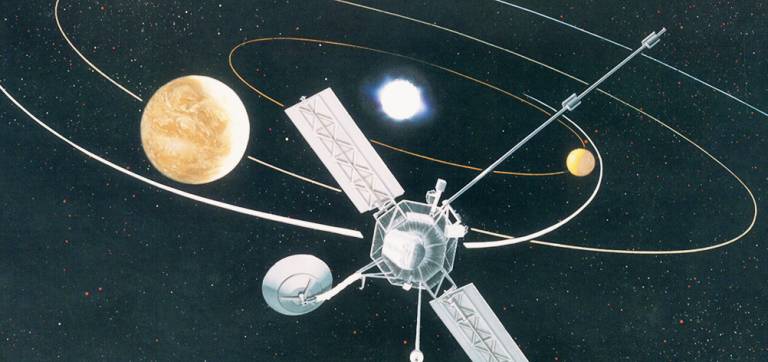Evolutionary clues reveal the structure and dynamics of proteins
3 November 2015
New research reveals that both the structure and dynamics of proteins can be determined from a combination of chemical and evolutionary data about them. This remarkable discovery shows that despite being extremely complex molecules, the key features and behaviours of proteins can be determined by a relatively small number of variables.
Proteins are long chain-like molecules that play many vital roles in the cells of living organisms. If DNA is the architect's drawing that sets out the design of a building, proteins are the bricks the building is made of.
The interaction of the protein's chemistry (all proteins are made up of a long chain of smaller molecules called amino acids) and its structure (the locations where the chain folds and sticks together) determines its overall three dimensional shape as well as its properties.
"Similar proteins do similar jobs in widely differing living organisms, which is a result of their evolution from a common ancestor," says Francesco Gervasio (UCL Chemistry). "Computer analysis of the sequence of amino acids in thousands of proteins from different species reveals the evolutionary relationships between the species."
Equivalent proteins are more similar in organisms that are more closely related, and often share an almost identical sequence of amino acids.
But looking at the differences is interesting too.
Statistical analysis of thousands of proteins shows that there are pairs of apparently unconnected amino acids, far away from each other on the chain, that also tend to change in tandem with each other. Bioinformaticians have recently shown that these pairs are found where the tangled chain of the protein has brought amino acids from different parts of the chain into contact with each other. That means they can be used to predict physical contacts between amino acids with great precision, in sufficient number to reconstruct the three dimensional structure (fold) of a protein accurately. This is already remarkable - extracting the structure of proteins from a statistical analysis of evolutionary changes in similar proteins.
This new research goes one step further: they have used a similar process to accurately predict the movement of the proteins. This is important as the ways parts of proteins move determine how they interact with the chemical environment inside living organisms, and underlie many biological processes.
The team did this by developing a new computer model that simulates the chemical makeup of the protein chain. They then used a separate machine learning algorithm to analyse many thousands of protein sequences to identify the pairs of amino acids that evolve together, and highlight the locations where the protein chain sticks together.
"Our model correctly simulated the way the chain folds and sticks to itself, which confirms previous research," Gervasio says. "But surprisingly it also correctly simulated the behaviour of the protein, and in particular the way it moves."
 Close
Close




